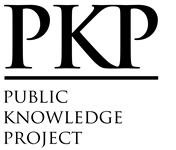Bleeding Influencing Color, Physical-Chemical Quality, and Texture Profile of Pirarucu (Arapaima Gigas) from Amazon, Brazil
Abstract
Pirarucu (Arapaima gigas) fishing and meat contribute socio-economically to the Amazon population, with recovering stocks resulting from the pirarucu management in the Middle Juruá region. The ventral portion of arapaima (belly) is widely consumed due to the high lipid content, which can predispose lipid and protein oxidative reactions. Differences among fishing practices, including the bleeding, may influence the quality and acceptance of the meat. In this context, we evaluated the effect of bleeding on the physical-chemical quality, color, and texture of bellies of arapaima obtained from sustainable community-based management. The bellies were obtained from ten (n=10) pirarucu carcasses. Five (n = 5) animals were slaughtered with bleeding by the gills (BLE) and five (n = 5) animals without bleeding (NON-BLE). Pirarucu bellies were sliced and assigned randomly for 0, 3, 6, and 9 days at 4oC to analyze pH, water holding capacity, instrumental color, and texture profile. NON-BLE exhibited greater (P < 0.05) redness and yellowness than BLE samples, whereas BLE exhibited greater (P < 0.05) color stability than their correlative BLE samples. BLE bellies exhibited greater (P < 0.05) hardness and chewiness than in NON-BLE counterparts. During storage, both BLE and NON-BLE exhibited an increase (P < 0.05) in pH. BLE bellies demonstrated a decrease (P < 0.05) in yellowness and color stability, whereas an increase (P < 0.05) in hardness and chewiness were observed in the same samples. These findings indicated that bleeding could improve the pirarucu meat quality.
Full Text:
PDFDOI: https://doi.org/10.5296/jfs.v11i1.19832
Refbacks
- There are currently no refbacks.
Copyright (c) 2022 Pamela Esteves Bassil, Mayara Xavier Martins, Paula Hernandes Sandes, Ana Paula Amaral de Alcântara Salim, Eliane Teixeira Mársico, Sérgio Borges Mano, Camila Valente Alva, Bruno Vianna Barradas, João Vitor Campos-Silva, Ana Paula Campos Barros, Antônio Adevaldo Dias da Costa, Micheli da Silva Ferreira

This work is licensed under a Creative Commons Attribution 4.0 International License.
Journal of Food Studies (ISSN 2166-1073)
Copyright © Macrothink Institute
To make sure that you can receive messages from us, please add the 'macrothink.org' domain to your e-mail 'safe list'. If you do not receive e-mail in your 'inbox', check your 'bulk mail' or 'junk mail' folders. If you have any questions, please contact: jfs@macrothink.org
-----------------------------------------------------------------------------



